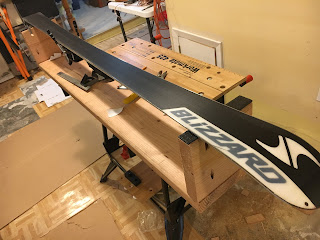Alternative Take on Flat Screen HD TV
Reading Jobu's posts on his new Panasonic TV, I'm struck by the difference in our buying experience and preparation. Reading this blog generally, it's apparent that Jobu and I have developed some significantly different interests and tastes, but one thing we generally share is the research and preparation we put into a major purchase. For me, my first flat screen HD TV was a significant exception.
I think I'm still of the mindset that televisions are the same simple appliance I grew up with. That's obviously not true, but I was unwilling to spend the time and effort to fully educate myself about everything new. I ended up getting the Samsung HLT5687S, and ended up very pleased.
But Jobu discusses things such as "black levels" when discussing his Panasonic, and I don't even know what that is. After I bought the Samsung, I found some reviews, like this one, with references to hot spots, and the lack of a rainbow effect (which is apparently good, and rare in DLPs). I don't know what those are, either. I also never ever contemplated the possibility that one would use a DVD to calibrate a television, until I read Jobu discuss it. And I'm guessing this is pretty basic stuff.
For me, my research basically meant determining that rear projection come in bigger sizes for less money than flat panel plasma or LCD. You also apparently lose some level of picture wonderfulness, which I'm OK with. Since our TV room setup is such that hanging the TV on the wall is not an option, I also didn't much care about the fact that the rear projection is thicker. It is still much, much thinner and lighter than old-style rear projection TVs. Also, at 56 inches, we are pushing the edge of size for our viewing distance, with no eye fatigue anybody is aware of.
Once I decided on rear projection, size, and price range, what pushed me to buy the model I did was an article in the business section of the Sunday NY Times. Now, as an off-topic aside, I'm finding the Times increasingly irrelevant, but in this instance it proved really useful. The article pointed out a new technology that Samsung is using in its DLP televisions, replacing bulbs as a light source with L.E.D.s. You can read the article for the advantages this brings, but I'm pretty sure it is responsible for most of the good things you'll ready in any review of this model, especially as compared to other DLP models.
I'm not alone in loving this model, as of the date of this post, the model has a 4.5 star rating at Amazon, and is near to pushing 5. I also bought it at Amazon,which was a superb buying experience. Although it wasn't eligible for the Amazon Prime free 2-day shipping, Amazon was offering free delivery when I bought, and the entire process was simple and smooth.
Finally, I'm more than pleased with the result. The picture is fantastic, in my admittedly uneducated opinion. The only flaw I've noticed is a bit of fuzziness in people's skin on close-ups, even under Hi-Def. I think this is not a flaw in the television, however, as I'm pretty sure I've never seen it on a DVD (I haven't even ventured into HD-DVD or Blu-Ray). We use Direct TV for our television service. Right now it has about a few dozen more HD channels than any of its competitors, but it is using some compression to do so. It's not clear how much, it appears that information is nearly impossible to obtain with any certainty, but I'm guessing that it is the cause of the fuzziness I've noticed.


Comments